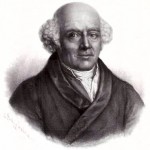by Margarita Tartakovsky, M.S: I’m honored to feature both Dan Millman and Sierra Prasada for this month’s “How I Create” series.

Millman and Prasada are the authors of the new book The Creative Compass: Writing Your Way From Inspiration to Publication.
In it, they feature five stages of creativity and combine their personal stories with sage insights from other writers and artists. (I shared their wise advice in my piece on creative cures for writer’s block.)
Below, they share a glimpse into their creative process along with surprising insights on cultivating creativity.
Millman is a former world champion gymnast, university coach and college professor. He’s the author of 17 books, including Way of the Peaceful Warrior, which has been translated into 29 languages.
Prasada is the author of Creative Lives: Portraits of Lebanese Artists and the founder of the 20th Century Project, which chronicles some of the major works produced over 100 years. She’s also a freelance journalist, workshop teacher, and editor.
Learn more about Dan Millman and Sierra Prasada.
1. Do you incorporate creativity-boosting activities into your daily routine? If so, what activities do you do?
We both find that daily exercise wonderfully concentrates the mind. Sitting in a chair (or cross-legged on a bed as Sierra sometimes prefers) for long periods of time becomes all the more palatable when we make the most of the time we’re not sitting.
For Dan that means calisthenics, hiking in the hills, going on bike rides, and bouncing on the trampoline. Sierra practices yoga, sings, runs, and walks around her city (Washington, D.C.).
Ultimately, for both of us, creativity means making new connections across disciplines and between art and life. We both take a lot from reading books and watching films, going to museums and traveling — what matters is recognizing the links between our projects and these activities, like the invisible lines that form constellations.
2. What are your inspirations for your work?
It becomes so much easier to create a lot when . . . you create a lot. We’re both so accustomed to sitting down and beginning again, each day and with each project, that doing so tends to generate its own inspiration.
And when we don’t feel inspired? We’ve been there too and worked through it, eventually reuniting with inspiration around the next bend — or the one following it.
In The Creative Compass, we write about “master metaphors,” personal achievements that emerged from unusual, even unreasonable desire and drive. As we were working on the book and other projects, our own master metaphors, and the commitment they demanded from us, reminded us how to react whenever we felt listless and unmotivated.
As Jack London put it, “You can’t wait for inspiration. You have to go after it with a club.”
3. There are many culprits that can crush creativity, such as distractions, self-doubt and fear of failure. What tends to stand in the way of your creativity?
Along with writers and artists everywhere, we confront the usual suspects: frustration, fear, doubt, stubbornness, and inertia. There’s nothing easier than not creating.
The best metaphor we’ve found for these obstacles are the specters that haunt the mathematician John Nash in Ron Howard’s film A Beautiful Mind. They never do go away — but he learns to recognize them for what they are and keep on doing his work and living his life.
4. How do you overcome these obstacles?
By writing onward. There’s no other way. And by respecting where we are in a cycle of five stages that we describe in our book. We ask ourselves: Am I dreaming, drafting, developing, or refining?
Each stage has its own challenges and remedies. Once we know where we are, it’s easier to plot a course toward somewhere else.
New projects will inevitably stimulate inspiration as well as fear and doubt, just as oxygen allows for both breathing and burning. But each time we pass through the ring of fire that comes with drafting and development, we know it’s more probable that we can do so again and do so more effectively. So, yes, it does get better.
5. What are some of your favorite resources on creativity?
We recognize that writers must each find their own creative resources. Often we take inspiration from others’ “sticky ideas” — that is, an idea that mattered to somebody so much that he or she felt compelled to do the work necessary to create that book or poster or piece of furniture or culinary delicacy.
If we learn how to listen, each work tells a story about creativity itself. And on any given day, we need only look up and around to see the world spinning by in countless stories.
More concretely, while writing our book, we returned often to interviews with fellow writers and excerpted advice that we’d clipped and saved, sometimes for years.
Others’ words and stories about their own practices continually point to a foundational principle of The Creative Compass: Each of us writes (or creates) in our own individual way.
6. What is your favorite way to get your creative juices flowing?
Finding ritual in routine. Surprising ourselves with what’s possible at moments when we feel tired or distracted. Knowing when to rest. Knowing how to rest: figuring out just what it is that encourages the mind to let go of unnecessary tension, whether a walk around the block, a game of solitaire, or a half an hour watching television. Finding a wiser self within via a technique we call “Dreaming in Dialogue.” Pretending we know exactly what we’re doing.
7. What’s your advice for readers on cultivating creativity?
Instead of worrying about cultivating creativity, we advise readers to cultivate a specific idea — the stickiest or most promising idea of the moment. In doing so, you’ll develop courage and stamina.
Free yourself to daydream. Take notes. If you’re working on a story, you can devise what we call a “What If” question and define your story in 25 words or fewer — one sentence is considerably less intimidating than a manuscript, and this particular sentence can guide that manuscript into existence.
8. Anything else you’d like readers to know about creativity?
Each of us has the ability to work creatively, if we only give ourselves permission to do so. It’s possible and desirable to admire others’ ways of working without seeking to adopt them wholesale ourselves.
We’re not here to write or live anyone else’s way. It’s worth taking the time to discover your way, trusting in your own creative compass — from that first inspiration to sharing a completed work with the world.

















































